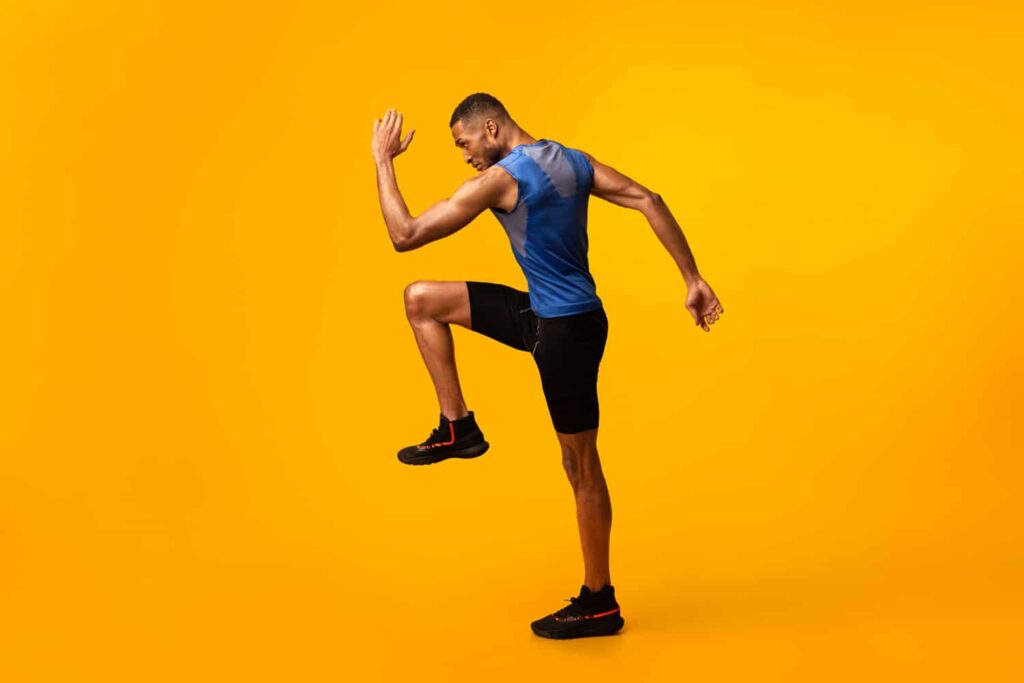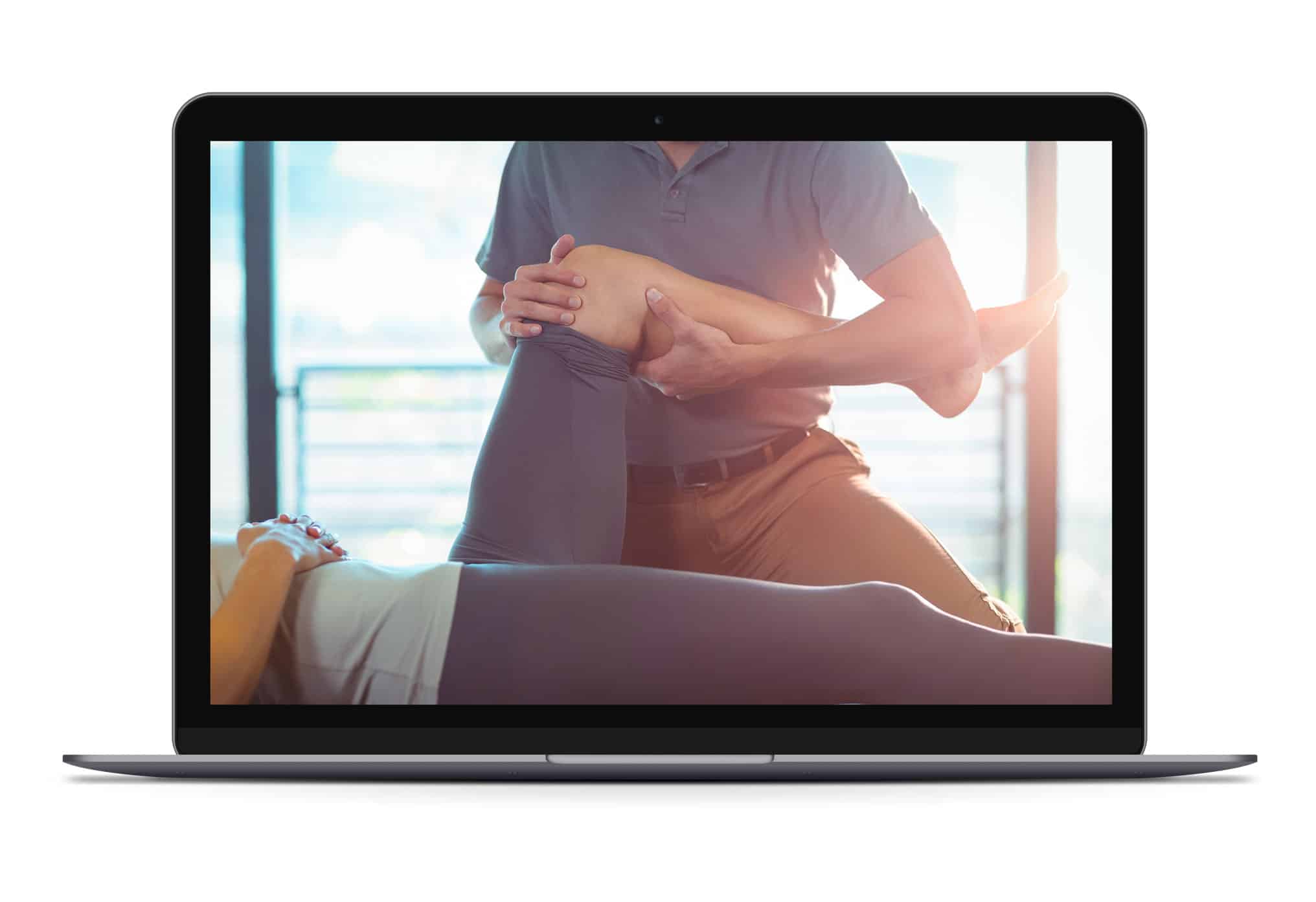7 Marching Drills That Will Improve Your Running

As Dick Vitale would say, “It’s March Madness, Baby!”
To celebrate, I’d like to share some marching madness.
Reflecting over the past two decades of my physical therapy, coaching, and sporting career, if there’s been one constant aside from swim, bike, run, lift, it’s undoubtedly a shit ton of marching.
Marching is a drill that challenges runners from an upright, single-leg standpoint that can be modified in several ways to challenge the performer pending the goal.
I tend to weave in some combination of marching drills throughout most days and encourage you to do the same unless there is some medical precaution or contraindication.
Early in my career, I prioritized static single leg balance drills to a greater degree, but I quickly learned that runners check out pretty damn quick if you don’t put them into motion.
In general, static single-leg balance work for runners is like having a cyclist practice balancing their bike in place — perhaps appropriate if you’re a bike messenger in New York City. Otherwise, there’s probably not a lot of bang for your buck. With that said, I do still incorporate some single leg balance work using my friend Jay Dicharry’s Mobo Board, especially after a lateral ankle sprain or if people need to restore foot and ankle capacity following a leg injury.
This blog post will take you through the 7 most common marching drills I prescribe while unpacking the rationale and discussing how to implement them into your routine.
Prepare for Marching
To get started I often have people march barefoot on firm, level ground. This helps you appreciate what your “little piggies” are doing by giving your nervous system more input through the high concentration of mechanoreceptors on the sole of our feet. Otherwise, aim to progress by using a thin, firm-soled shoe.
When performing the marching drills, the goal is to initially find a tempo or pace that feels smooth and fluid. From there, you can work on slowing it down or speeding it up from there. Also, know that it’s perfectly normal to feel a bit wobbly unless you perform in Cirque de Soleil.
Strive for mastery and grace, and remember that mistakes drive (motor) learning.
- Baseline Marching – if you’re new to marching, start here. March forward in a smooth, fluid manner. A practical and straightforward way to progress this drill is by rotating your head side to side or by closing one eye at a time. Stick the high knee position for a second, and when going to lower the non-balancing leg to the ground, initiate contact with the ball of your foot before gently lowering the heel to the ground. You can also march to a metronome at different beat frequencies. I often start at 30 beats per minute (bpm) and work up to 120bpm in 30 beat increments. As you go from 30 to 120bpm, you’ll appreciate the greater coordination requirements, not to mention having to hit the ground harder, which is an essential part of the rehab process in preparation for running.
- Prisoner March – the prisoner march is a simple progression from the baseline march in that you’re taking the arms out of the equation. This drill promotes getting tall, a common denominator among the world’s best runners. I often find myself prescribing this variation for high school runners.
- March to Overhead Reach – this marching drill is sometimes referred to as a “vertical bird dog.” It’s a staple for triathletes I work with because it engenders a sense of being long while challenging overhead mobility. It kind of sounds like freestyle swimming, eh?
- 3-Way Mini Band March – another variation I often incorporate into a triathlete’s programming. It challenges the shoulder musculature and demands a rhythm and timing element to coordinate/synchronize the movement of the arms and legs.
- March w/ Weight Overhead – a great marching drill to challenge a runner’s trunk control. There is no need to get carried away with the weight…a 10-25lb dumbbell or bumper plate is sensible. Holding a dowel rod or broomstick also works well for adolescent athletes.
- March w/ Punch – although the arms generally don’t break the plane (forward) of the body with distance running, I like this drill as it promotes a skosh of spinal rotation, which is healthy for your back. Some athletes like holding lightweight (5-10lb) dumbbells when doing this. Perhaps I’m just challenging my inner Bruce Lee by incorporating the punch.
- Marching Matrix – this drill is for you if you’re looking to get FONCY by combining a handful of different marching variations in a series. A lightweight (10-15lbs) med ball, dumbbell, or equivalent is all you need, and you’re in business.
How To Incorporate Marching into Your Routine
When it comes to training, I often have runners and triathletes use marching drills at the beginning of a strength training session or the end of a run as part of a walking cool-down to engender a sense of being tall.
Programming marching drills at the beginning of a strength training session is great as it affords an excellent way to check out from your daily grind and segue into your strength session.
For example, I routinely pick one of the marching drills above and have an athlete complete 2-3, 1-minute passes before getting into the crux of the lifting session.
Those athletes who trust me to coach them can attest that I often prescribe a one-minute pass of the march to overhead reach as part of their walking cool-down post-run. There is nothing like having runners wrap up their run with a drill that promotes getting tall and upright.
I also incorporate the marching drills randomly throughout the day as “movement snacks.” Shoutout to Ben Cormack for this phrase. For example, I use the Pomodoro method, where I work in a 25-minute block then take a 5-minute break. During the break is when I do the marching drills. Since many people are working from home, this has become easier, and you don’t need to worry about your colleagues making fun of you. By day’s end, I’m willing to bet that you’ll feel better by implementing a similar approach and be more productive.
So there you have it, Marching Madness. Please reach out with questions. Otherwise…FORWARD MARCH!




